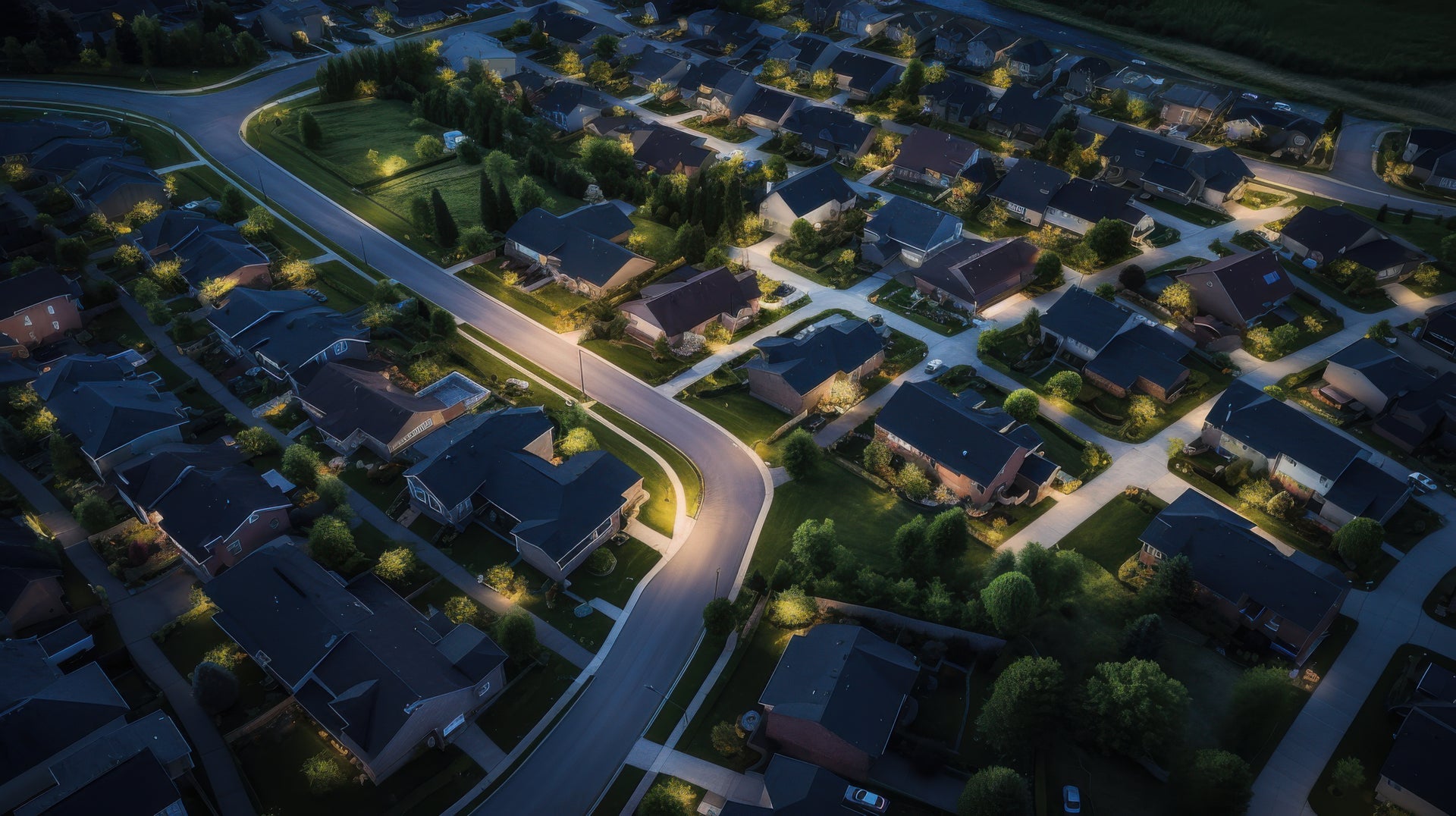Appraisal gaps are more prevalent among small starter homes
- What is an appraisal gap? Appraisal gaps arise when a house’s appraised value falls short of the agreed-upon sales price.
- In June 2024, 8.6% of all home sales in the closing process were appraised below the contract sales price, down from 10.7% a year ago.
- Appraisal gaps are more prevalent among small starter homes.
- 9.6% of starter homes were appraised below the pre-closing contract sale price, down from 12.1% a year ago.
- 7.1% of larger, more expensive homes had an appraisal gap, slightly higher than a year ago.
- On average, starter homes are 3-5% more likely than large homes to have an appraisal gap, reflecting a higher risk of overpayment by inexperienced first-time homebuyers.
Collateral vetting through home appraisal will normally find 1 in 10 homes to have insufficient collateral value relative to the sales price, which is known as an appraisal gap. The presence of appraisal gap can delay the closing on a house, and it may even lead to lenders denying a loan if the collateral risk becomes too uncertain.
In such circumstances, lenders may require buyers to put down additional payment to cover the difference. Alternatively, buyers may find it beneficial to renegotiate with sellers for a reduced price.
In June 2024, 8.6% of all U.S. homes sales in the closing process were appraised below the contract price, down from 10.7% a year ago. Figure 1 shows the percentage of monthly sales contracts with an appraisal gap. The chart also plots the year-over-year change in home prices to reveal how a higher risk of appraisal gap is often associated with fast-rising home prices.
Keep Pace With the Property Market

Figure 1: Normalization of appraisal gap under steady home price growth
As shown, the presence of appraisal gaps is normal when vetting the collateral during the appraisal process; it is part of ensuring the safety and soundness of the loans. The normal rate of appraisal gaps can fluctuate month to month, dipping as low as 6-7% and reaching as high as 9-10%. These monthly fluctuations are seasonal, and the ebbs and flows track closely with the seasonal ups and downs in home sales and home prices.
The exception to this was during the frenzied pandemic homebuying period when home prices rose by leaps and bounds. To learn more about how rapidly rising interest rates and plunging home sales resulted in the end of the pandemic housing boom and a return to normal for appraisal gaps, see a previous CoreLogic Intelligence blog.
Starter Homes See Greater Rates of Appraisal Gaps
The small starter homes that attract many first-time homebuyers are the homes that are more likely to have their appraised collateral value fall short of the sales price agreed upon between the buyer and the seller. This disparity is particularly evident when comparing starter homes to large, more expensive homes.
Buying a home can be an overwhelming experience for any homebuyer, regardless of their experience in purchasing property. For many first-time homebuyers, in addition to navigating the fast-moving and complex homebuying process for the first time, there is an emotional component to the process that can increase the risk of overpayment when compared with more experienced, repeat buyers.
Figure 2 shows appraisal gaps for homes in various size categories, including small, more-affordable starter homes with less than 1,800 square feet, as well as large, more expensive homes with at least 3,500 square feet. The absolute difference in appraisal gaps between starter homes and homes in the largest size category (3,500 square feet or more) is shown in the bar chart.

Figure 2: Starter homes are more likely to run into appraisal gaps
As shown above, there is a higher rate of appraisal gaps among small starter homes when compared with larger, more expensive homes. However, appraisal gap trends across categories tend to fluctuate in similar ways.
On average, the difference in appraisal gap rates between starter homes and homes with 3,500 square feet or more stands between 3% and 5%. There was an exception during the summer of 2021 when this difference reached as much 8%. In June and July 2021, as many as 21.5% of starter homes had an appraisal gap while 13.5% of larger homes had a gap.
The risk of inexperienced first-time homebuyers overpaying was amplified during the heated pandemic homebuying period and the frenzied bidding wars that were fueled by record-low interest rates.
In June 2024, 9.6% of starter homes were appraised below the pre-closing contract sales price, down from 12.1% a year ago. In comparison, 7.1% of homes with 3,500 or more square feet had an appraisal gap, down from 8.3% a year ago.
Proactive Preparation Is the Best Defense Against Appraisal Gaps
While small appraisal gaps may not be a deal breaker for homebuyers, situations where there is a sizeable deficiency in collateral value may be. Therefore, it is wise to avoid large appraisal gaps, and doing so is best managed by being proactive with an appraisal contingency plan.
Sales offers typically contain an appraisal contingency clause, sometimes referred to as appraisal gap clause, to give buyers the upper hand if a home is appraised at a value that is less than the purchase price. In a sense, appraisal gaps present an important opportunity for buyers to take charge, re-evaluate a home’s worth, and possibly renegotiate with the seller for a reduced price or sales concessions.
While there are other options available, such as appealing the appraisal, getting a second appraisal, or making additional cash payment if a buyer is confident about the initially agreed-upon purchase price, overpaying is not a winning strategy, especially in the presence of a large appraisal gap.
CoreLogic’s Office of the Chief Economist regularly explores current mortgage trends on the last Thursday of each month in a new series of analyses.
Keep Pace With the Property Market
©2024 CoreLogic, Inc. All rights reserved. The CoreLogic content and information in this blog post may not be reproduced or used in any form without express accreditation to CoreLogic as the source of the content. While all of the content and information in this blog post is believed to be accurate, the content and information is provided “as is” with no guarantee, representation, or warranty, express or implied, of any kind including but not limited to as to the merchantability, non-infringement of intellectual property rights, completeness, accuracy, applicability, or fitness, in connection with the content or information or the products referenced and assumes no responsibility or liability whatsoever for the content or information or the products referenced or any reliance thereon. CoreLogic® and the CoreLogic logo are the trademarks of CoreLogic, Inc. or its affiliates or subsidiaries. Other trade names or trademarks referenced are the property of their respective owners.


